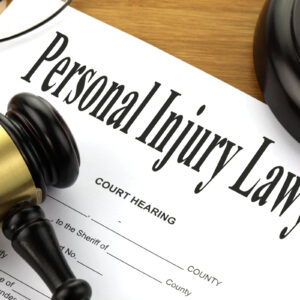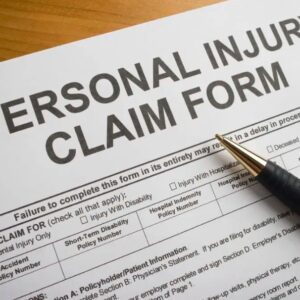Accidents happen. And when they do, the physical injuries are often just the tip of the iceberg. The emotional distress, mental anguish, and overall disruption to your life following an injury can be significant. This is where “pain and suffering” damages come into play. But what are they, and how do you know if you’re entitled to compensation?
Understanding Pain and Suffering Damages
“Pain and suffering” is a legal term referring to the non-economic damages you experience as a result of an injury. Unlike medical bills or lost wages, which have a specific dollar value, pain and suffering is more subjective. It aims to compensate you for the negative impact the injury has had on your quality of life.
What Constitutes Pain and Suffering?
Pain and suffering can encompass a wide range of experiences, including:
- Physical Pain: This includes the immediate pain from the injury, as well as any chronic pain or discomfort you experience afterward.
- Emotional Distress: Anxiety, depression, fear, grief, and post-traumatic stress disorder (PTSD) can all fall under this category.
- Mental Anguish: This covers the psychological impact of the injury, such as feelings of helplessness, shame, or humiliation.
- Loss of Enjoyment of Life: If your injury prevents you from participating in hobbies, activities, or social events you once enjoyed, this can be considered pain and suffering.
- Disfigurement or Scarring: Visible scars or disfigurement can lead to emotional distress and social anxiety.
- Loss of Consortium: In some cases, a spouse can claim damages for the loss of companionship, intimacy, and support due to their partner’s injury.
Establishing a Claim for Pain and Suffering
To pursue a pain and suffering claim, you must generally prove that your injuries were caused by someone else’s negligence. This could be due to a car accident, slip and fall, medical malpractice, or other type of incident.
A successful pain and suffering claim needs solid documentation. Keep detailed records of your medical treatment, therapy sessions, and any medication you’re taking. Journaling your emotional state, sleep patterns, and daily challenges can also provide valuable evidence.
Calculating Pain and Suffering Damages
There’s no single formula for calculating pain and suffering. Insurance companies and courts often use two primary methods:
- Multiplier Method: This involves multiplying your economic damages (medical bills, lost wages) by a factor, typically between 1.5 and 5, depending on the severity of your injuries and their impact on your life. For example, if your economic damages are $10,000 and the multiplier is 3, your pain and suffering damages could be $30,000.
- Per Diem Method: This assigns a daily dollar amount for your pain and suffering from the date of the injury until you reach maximum medical improvement.
Factors Affecting Pain and Suffering Compensation
Several factors influence the amount of compensation you may receive:
- Severity of Your Injuries: More serious injuries typically result in higher pain and suffering awards.
- Impact on Your Life: How significantly has the injury affected your ability to work, maintain relationships, and enjoy your hobbies?
- Clarity of Evidence: Strong medical records, witness statements, and expert testimony can strengthen your claim.
- State Laws: Some states have caps on the amount of non-economic damages you can recover in certain types of cases, such as medical malpractice. For example, California has caps on non-economic damages in medical malpractice cases, set at $250,000.
Proving Your Pain and Suffering
Proving pain and suffering can be challenging since it’s subjective. However, several types of evidence can help:
- Medical Records: Documenting your injuries, treatment, and prognosis.
- Mental Health Records: If you’ve sought therapy or counseling, these records can demonstrate the emotional impact of the injury.
- Personal Journal: A detailed account of your daily experiences, pain levels, and emotional struggles.
- Witness Testimony: Statements from friends, family, and coworkers who have observed the impact of the injury on your life.
- Expert Witnesses: Psychologists or psychiatrists can provide expert opinions on your emotional distress and its connection to the injury. For example, a psychologist might conduct a psychological evaluation to diagnose PTSD and testify about the impact it has on your daily life.
A pre-existing condition does not automatically disqualify you from receiving pain and suffering damages. However, it can complicate matters. Insurance companies might argue that your pain and suffering is solely attributable to the pre-existing condition. To counter this, your attorney can present evidence demonstrating that the accident aggravated or worsened your pre-existing condition.
In one case, a woman with a history of anxiety was involved in a car accident. While she had pre-existing anxiety, the accident significantly exacerbated her symptoms, leading to panic attacks and agoraphobia. With the help of expert testimony from a psychiatrist, she was able to demonstrate that the accident directly caused the worsening of her condition and receive compensation for her increased pain and suffering.
Insurance companies often evaluate pain and suffering claims by considering the severity of the injury, the length of medical treatment, and the impact on the claimant’s daily life. They may also use software programs to calculate a settlement range based on similar cases.
Seeking Legal Assistance for Your Pain and Suffering Damages
Pursuing a pain and suffering claim can be complex. An experienced personal injury attorney can guide you through the process, gather evidence, negotiate with insurance companies, and represent you in court if necessary. They can assess the value of your claim and fight for the compensation you deserve.





